Fantasia at 20: Memories and Recommendations
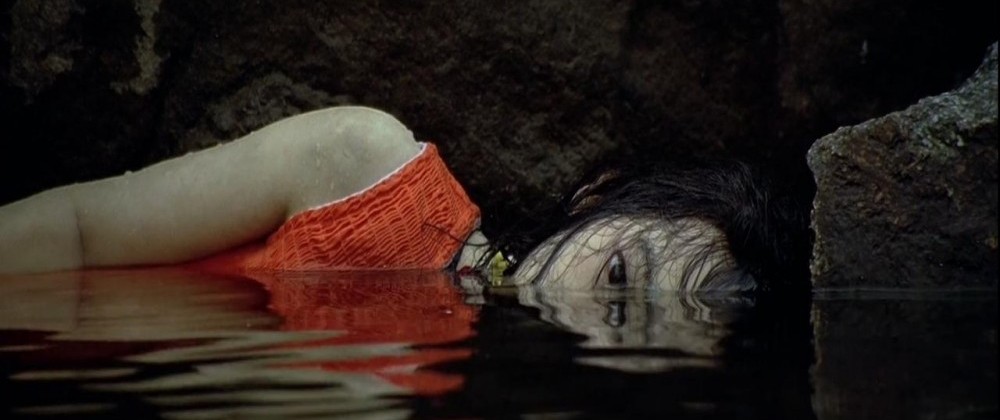
One summer’s day twenty years ago, I was walking downtown and noticed that something was going on at the Imperial Theatre, the lone survivor of Montreal’s classic movie palaces. I hadn’t seen any publicity about a festival, but as it was showing Hayao Miyazaki’s The Castle of Cagliostro, which I had heard of, but never seen, I thought why not? On the way in to the half-empty theatre, I picked up a festival program to leaf through before the film . . . and my mind was officially blown.
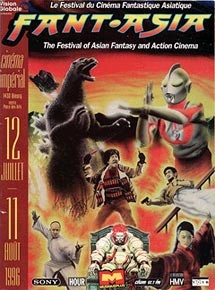
As a film nut, I was aware of the buzz growing around the new Hong Kong cinema in the 90s – Time magazine had a story, Quentin Tarantino announced he was a fan – but I had actually seen very little of it. I had caught festival screenings of Wong Kar-wai’s Chungking Express and Fallen Angels, watched The Killer in a largely empty first-run cinema, and seen a couple of Jackie Chan films. I liked them all, of course, but they hadn’t come close to preparing me for the whole new world of cinema found in the Fantasia program: John Woo, Chow Yun-fat and Jackie Chan were joined by Jet Li, Tony Leung Chiu-wai, Maggie Cheung, Ringo Lam, Leslie Cheung, Stephen Chow, Anita Mui, Michelle Yeoh, Simon Yam, Anthony Wong, Johnnie To, Donnie Yen, Chingmy Yau, Andy Lau, Samo Hung, Tsui Hark, and on and on and on, in a brilliantly cherry-picked selection of early-90s Hong Kong genre cinema, including Bullet in the Head, City on Fire, Fist of Legend, Iron Monkey, the two-part A Chinese Odyssey, Full Contact, The Untold Story, My Father Is a Hero, and The Story of Ricky. And, for added attraction, there was also Japanese anime and a clutch of Godzilla movies on offer.
More than a little intrigued, I promptly bought a festival pass, and when I returned the next day, something funny happened. There were more people there. And even more the next day. Soon the theatres were full and queues were forming on the street; and every day the lineups seemed to be longer. Well before the end of the festival, they were running completely around the block. The little festival with no publicity and no sponsors had become a word-of-mouth phenomenon, half uncovering and half creating an audience for a type of cinema that had largely been invisible in Montreal. It’s not that that there weren’t film festivals in the city before, but they had tended toward either art films or mainstream commercial fare from other countries. Fantasia offered some of that, but also served up popular genre cinema: martial arts and other types of action films, comedies, horror and fantasy flicks that traditional festivals had always tended to pass on. Some of those lining up already knew about these films through various underground scenes, but for many others, including me, they were a revelation.
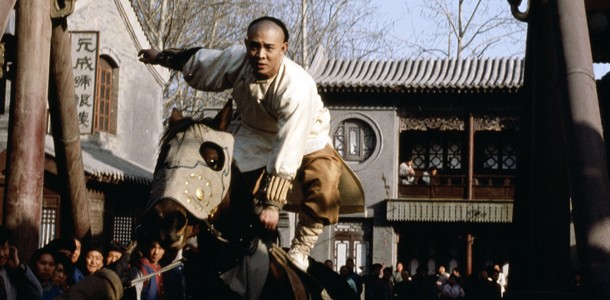
Fong Sai Yuk
Two films I’d particularly like to single out, not because they were the best films I saw that year (nothing topped John Woo’s brilliant Bullet in the Head), but because they made such a strong impression on me at the time. The first is Fong Sai Yuk, a period martial arts film starring Jet Li that featured ingeniously choreographed action scenes that provided a showcase for the star’s trademark athleticism that worked much better than it had a right to because of the wit and intelligence with which it was made and the way it proved that Li could be a gifted comic actor when given the right material. The second is the lesser known Organized Crime & the Triad Bureau, a fast-moving thriller made with verve and pace where cops battle criminals in a morally ambiguous universe. What impressed me was the way the filmmakers made up for the ragged plotting and uneven script through extensive location shooting and staging the action at a hell of a clip in the best traditions of low budget genre cinema. It wasn’t that these films were as good as mainstream Hollywood cinema; they were better.
The long Fantasia lineups themselves would in time become something of a legend. If in that first summer those of us standing in line became aware of the existence of an ever-growing group of like-minded cinephiles, this was only the beginning. An untold number of creative projects have sprung from chance meetings between people lining up for films or tickets, and if I had a nickel for every time somebody has told me they’d met their partner while waiting in line at Fantasia . . . well, I wouldn’t be rich, but I’d have a whole lot of nickels.

The lineups are linked to another festival characteristic, the easy mixing between the public, critics, filmmakers, industry types, festival organizers and programmers, publishers and special guests, talking movies while waiting in queues, mingling in the lobby or lifting pints into the early hours at a nearby pub. Does this happen at other festivals? None that I’ve been to, anyway. Over the years, two festival guests I have particularly good memories of are Ray Harryhausen and David Bordwell. I only had a very brief chat with Harryhausen, the special effects wizard behind such classic vintage fantasy epics as Jason and the Argonauts and The Golden Voyage of Sinbad, but he was friendly and patient with his many admirers, and, even better, had the original models of the skeleton swordsmen from Jason with him. My inner ten-year-old was thrilled to his toenails. Bordwell, the noted film historian who wrote (among many other things) Planet Hong Kong, was in Montreal to pick up a festival prize and give a master class on the nuts and bolts of Hong Kong action cinema. I was able to spend some time with him and he even graciously agreed to sit down for an interview.
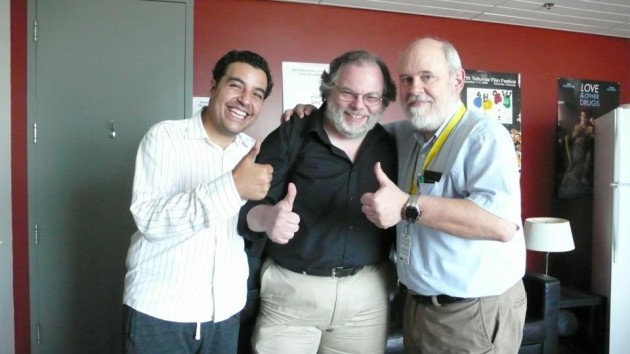
Bordwell’s the fellow on the right
Bordwell is not exactly a shy and retiring academic. He mixed easily with the crowds, cheerfully meowed in the dark, and enjoyed chatting with his fellow filmgoers. He was very impressed by the audiences and what he described as their “very respectful and admiring attitude towards this crazy cinema that people are programming that is that of the real otaku, the real fan person who can laugh in pleasure at the outrageousness of it rather than laugh mockingly at it.” That is, some of the films are intended as camp and the audiences enjoy them as that, but there are also a lot of films that many audiences would dismiss as trash that Fantasia festivalgoers are willing to appreciate on their own terms.
This has led to some memorable moments. One that many remember from 1999 was at the screening of Gamera 3: The Revenge of Iris. While the crowd had been loudly appreciative throughout the film, the line “Why does Japan keep getting invaded by monsters?” was greeted by an explosion of laughter and applause that must have come close to taking the roof off the Imperial. After the film, the pleased, if somewhat dazed, director, Shusuke Kaneko, told the audience that he’d never seen an audience react to one of his films with such appreciation.
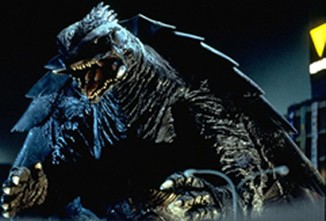
Gamera 3: The Revenge of Iris
Although there is no shortage of good Hong Kong films, it would have been impossible for Fantasia to survive only on those, even supplemented by Japanese anime and monster movies. The decision to branch out to genre and independent cinema from around the world has been key to its growth and durability. The wide variety of genres has meant, to some extent, a splintering of the audience as people focus on their preferred type of movie. Still, I usually recommend that everybody should try to check out films outside their comfort zone, because that’s where some of the most unexpected treasures can be found. In my case, I’m not necessarily a big horror fan, but it wasn’t hard for me to appreciate the beautifully understated pleasures of the Swedish modern vampire classic Let the Right One In, or the elegant direction and irresistible premise of the original Ringu. I well remember the audience’s rapt silence being broken by a single scream when the ghost’s hand grabs the heroine’s ankle in the well. But that paled compared to the excruciating, edge-of-the-seat tension of the well-named Haute tension (or the after film arguments in the lobby over whether the film had played fair). It would also be fair to say that I have trouble thinking of an image equally terrifying as the moment in Shutter when the photographed image in profile turns and faces the hero/the audience. I also really appreciated the offbeat, allusive art film horror of Canary, where the extremely horrifying events happened offscreen . . . and, of course, in your head. And then there was Takashi Miike’s Audition. The film’s brilliantly cinematic torture sequence, where Miike mixes black humour with unbridled violence, had a visceral impact rarely matched in horror cinema. I usually consider the Fantasia audience a pretty tough bunch who could calmly munch popcorn through the most graphic and disturbing scenes, but at the 2000 screening of Audition, the sequence was punctuated by screams and audience members scrambling for the exits. Many of those who stayed watched the film from under their seat or between the fingers as the events onscreen got wilder: “Is that piano wire? She’s not going to . . . OH MY GOD!” It’s quite possible that the passage of time since that screening, where increasingly graphic violence has been readily available in films and video games, means that a contemporary audience’s reaction to Audition would be much more muted. But, then again, I’m confident that if Miike made the film today, he’d up his game to ensure a similarly extreme reaction. For example, I’m pretty sure the piano wire would be used elsewhere than the leg . . .
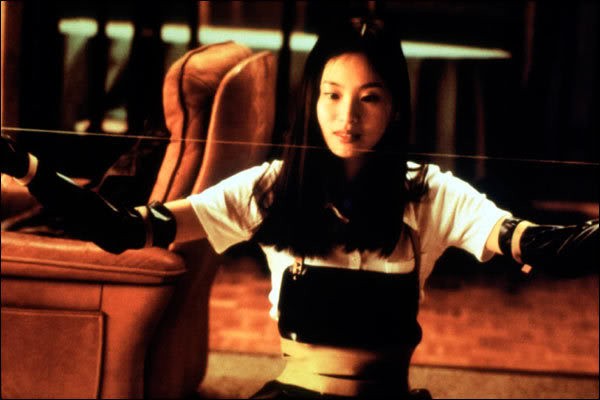
What’s she going to do with piano wire?
Miike, of course, is being honoured this year, and Fantasia has been great in showcasing not only his work, but also those of directors such as Kiyoshi Kurosawa, Shunji Iwai, Pang Ho-cheung and Sion Sono. But if I had to pick one filmmaker who has been a consistent personal favourite through the years with Fantasia, it would be Hong Kong’s Johnnie To. From The Heroic Trio in the festival’s first year, through to The Mission, his mesmerizing deconstruction of the action film, and on to his various playful explorations of action cinema such as A Hero Never Dies, The Sparrow, Breaking News, and Exiled. Drug War, from a couple of years ago is typically great, featuring as it does a borderline insane climax, an extended sequence of intricately choreographed violence where To deploys what seems like a couple of dozen characters, often acting at cross purposes, without losing track of any of them or confusing the audience. It’s a real tour de force from a master of the medium.
Fantasia should also be congratulated for being open to Canadian filmmakers, something that hasn’t always been true of their local festivals. A couple of no-budget standouts I’d like to mention are Matt Johnson’s angry and honest look at teenage bullying and school shootings, The Dirties, and the smart-alecky, ingratiating horror comic Bloody Knuckles. In both cases, wit, passion and ingenuity go an awful long way. And if Fantasia didn’t show them, who will?
Something should also be said for the festival’s attention to film history. Among my most memorable Fantasia screenings were when I was lucky to see beautiful new 35mm prints of great films like Come Drink With Me, Golden Swallow, The Revenge of Frankenstein and the original cut of Godzilla. There were also series of Japanese yakuza films from the 60s, rare vintage prints of Shaw Brothers crowd pleasers, long unreleased gems like Number 10 Blues/Goodbye Saigon, and rediscovered classics like The Housemaid and Kuroneko.
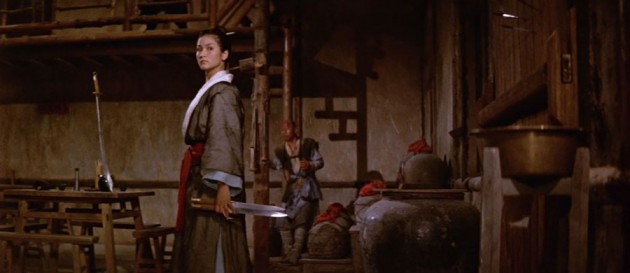
Come Drink With Me
Have I left anything out? Lots. Quirky documentaries like the haunting Wisconsin Death Trip and the genuinely strange The Creeping Garden, hallucinatory animation such as Kon Satoshi’s Perfect Blue, the memorable screening of Park Chan-wook’s uncompromising masterpiece Sympathy for Mr. Vengeance, which heralded a flood of terrific genre films from the South Korean New Wave, cheerful rock ‘n’ roll films like GS Wonderland and Go Go 70s, even more cheerful horror comedies like Game of Werewolves and Grabbers, the time Abel Ferrara followed one of his best films, Welcome to New York, with a question and answer session where he offered the crowd unvarnished comments for close to two hours. To be honest, I could go on, but it’s probably enough to say at this point that there have been a fair number of highlights over the years. Thanks, Fantasia.
And there are also a fair number of films on offer that might be this year’s highlights. Here are a few that look interesting.
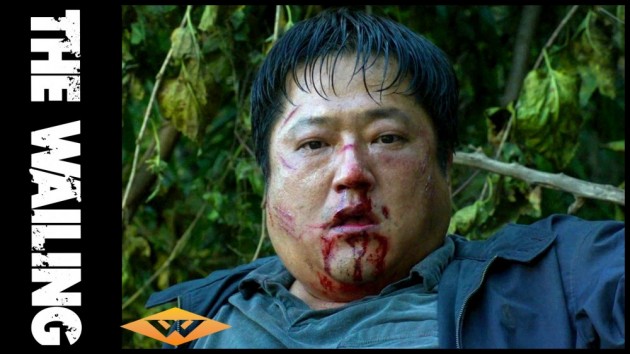
The Wailing
The film I am probably most eager to check out is The Wailing a tense thriller that showed at Cannes and has been getting rave reviews. In the wake of its New Wave, South Korea has, over the past decade or so, quietly become the most reliable source for imaginative and entertaining genre thrillers, as seen by such recent Fantasia offerings as A Hard Day and Cold Eyes. The most promising of the other Korean films looks to be a noir-ish thriller, The Phantom Detective, while admirers of Korean costume dramas, which are often very good, might be interested in The Throne.
My man Johnnie To is back again this year with Three, a new action thriller. What else do I need to know?
Hans Petter Moland, Norwegian director of the (very) dark comedy In Order of Disappearance, which expertly mixed dry humour and a high body count, is back with the Danish-set A Conspiracy of Faith, a much darker mystery involving religious fanaticism and child abuse. This is the third in a series of adaptations of Jussi-Adler Olsen’s highly regarded novels featuring a team of Copenhagen detectives who specialize in reopening “cold cases.” The films, like the novels, are very popular throughout Scandinavia.
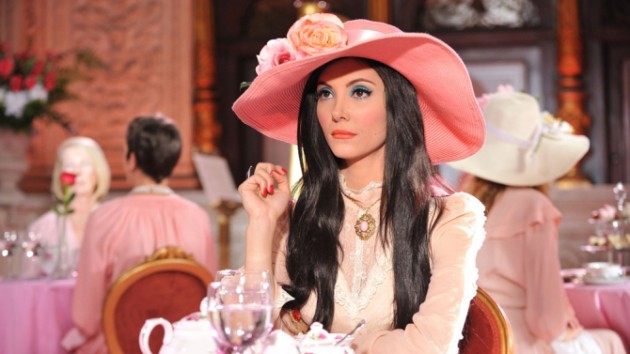
The Love Witch
Fantasia has long been a place to see the best of U.S. independent cinema, and this year there is writer-director Adam Pinney’s The Arbalest, which a critic has described as “a satire of Hollywood’s love of the great white male,” and The Love Witch, a carefully stylized pastiche of 60s supernatural thrillers by Anna Biller, who also wrote and directed. Both films have been getting excellent reviews on the festival circuit.
As always, there are some vintage films in this year’s mix. The most intriguing is Momotaro, Sacred Sailors, a feature length animated film from 1945 that has long been considered lost, not least because it apparently features its cuddly, sympathetic characters engaged in, among other things, bombing Pearl Harbour. If that’s not enough to hook you, the film’s creator, Mitsuyo Seo, played a major role in the development of Japanese anime. Beyond that, the festival’s admirable ongoing celebration of Quebec genre cinema continues with Robert Morin’s excellent gangster film update, Requiem pour un beau sans-coeur, while Larry Kent’s flawed, but entertaining Fleur bleue, featuring a young Susan Sarandon, is worth seeing for its hippyish charm and the key role Kent (still going strong, as seen by last year’s powerful She Who Must Burn) played in the development of Canadian independent cinema. Which raises the question of when Fantasia is going to show Kent’s notorious, psychedelic High? And finally, for fellow Shaw Brothers fans, there is also the must-see screening of Holy Flame of the Martial World.
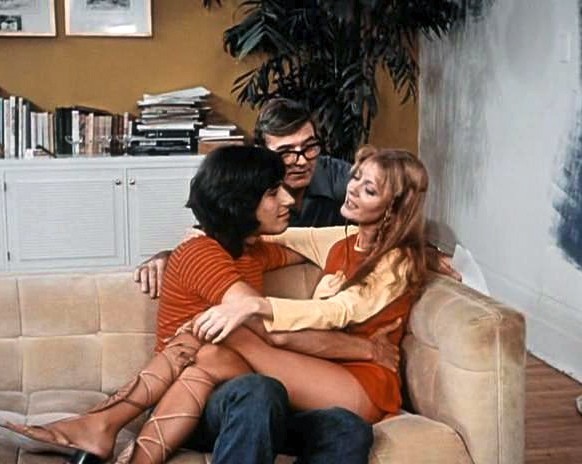
Fleur bleue
Philippe Spurrell is a showman who has been staging film events around Montreal for over twenty years, and he returns to Fantasia with a fascinating show. The night starts off with the seminal 1932 horror film Freaks, set in the world of circus freak shows. This will be followed by Your Death May Be Tonight, an obscure 50s documentary about circus daredevils and a live performance by a local circus troupe. Those who remember earlier Spurrell-Fantasia collaborations such as his program of vintage porn or his accompanying of early silent “trick films” with a performance by a Montreal magician will want to check this out. Spurrell knows how to put on a show.
A nice companion to Spurrell’s show might be The Show of Shows, an impressionistic Icelandic documentary from Benedikt Erlingsson (director of the oddball feature Of Horses and Men) that examines the world of circus performers and carnival curiosities. A couple of other documentaries that look interesting are Beware the Slenderman, about a brutal crime inspired by the popular video game, and For the Love of Spock, whose fascination will be obvious to many and no doubt inexplicable to everybody else.
Kiyoshi Kurosawa, director of such wonderfully creepy thrillers as Cure, Seance and Pulse, returns to Fantasia with the (hopefully) appropriately named horror thriller Creepy. There are some other Japanese films that look interesting, notably the two part Parasyte which mixes teen angst and body horror in an alien invasion tale, and Library Wars: The Final Mission, a sequel to 2013’s Library Wars, which took its all-star cast through an increasingly silly narrative that worked beautifully because it was smoothly directed and played with a straight face throughout. Expect more of the same.
Feature image: Sympathy for Mr. Vengeance










